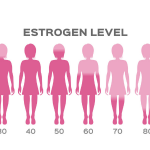Node Smith, ND
Focusing on strengthening our muscles rather than losing fat may be a better way to protect ourselves from weight-related hazards like diabetes and cardiovascular disease, investigators say.
More muscles, less focus on fat may be better at protection from weight-related diseases
They hypothesize, and have early evidence that poor skeletal muscle health is a primary factor, coupled with an unhealthy diet, physical inactivity and stress which reduces insulin sensitivity, putting us as risk for diabetes, and increased early markers of cardiovascular disease, like stiffening arteries.
While the Medical College of Georgia investigators think this is bad for all of us, it may also help explain even higher rates — and more severe cases — of these common maladies in blacks.
Measuring muscle health rather than fat, could be a more accurate indicator of how we are faring from genetics
If they are right, it could make measuring muscle health rather than fat a more accurate indicator of how we are faring from the genetics we are born with and the lifestyles we are choosing.
Resistance training: a new focus in the fight to stay healthy
It may also make resistance training, which contracts our muscles, a new focus in the fight to stay healthy, says Dr. Ryan A. Harris, clinical exercise and vascular physiologist at the MCG Georgia Prevention Institute and Department of Medicine.
Harris and MCG genetic epidemiologist Dr. Xiaoling Wang are co-principal investigators on a $3.4 million grant from the National Institutes of Health that is perusing 400 pairs of twins ages 22 to 45 to find answers.
Perusing 400 pairs of twins ages 22 to 45 to find answers
The identical and fraternal twins will help investigators control for genetics, which along with environmental factors like diet and activity levels, contribute to obesity, which affects about 40 percent of adults in the U.S., with Hispanics and blacks experiencing rates closer to 50 percent, according to the Centers for Disease Control and Prevention.
About 50 percent of the twins are now overweight and 30 percent are obese
Like their faces, the genetics of identical twins is identical, while fraternal twins — as with many siblings — share 50 percent of their DNA, says Wang. Like the more general population, about 50 percent of the twins are now overweight and 30 percent are obese, the investigators says of the twins who have been followed for 15 years at MCG’s Georgia Prevention Institute. Particularly with the identical twins, their girth tends to be similar, they note, even though they may now be living in very different environments. Their similarities and differences make it easier for the investigators to parse how much environmental factors, rather than genetics, contribute to fatness and muscle strength.
Controlling for genetics in the quest to find better treatment targets
Controlling for genetics in the quest to find better treatment targets also is important because it is true that two people may both eat badly, but only one pays the price of weight gain and related health problems, Wang says. It also may help explain why some cannot get their weight under control and why others are “fit and fat.”
Regardless, obesity is widely considered a “health failure,” Wang notes.
“Obesity has been studied for so many years and losing weight has been so difficult, we would like to find a mechanism we can target to help people avoid obesity-related disease,” she says.
The difficulty with losing weight
The difficulty with losing weight — and keeping it off — can discourage even a diligent individual, one of myriad of reasons the investigators want to learn more about the muscle’s role and whether the fitness of our muscle might be a better gauge of our health than a number of a scale.
While muscle has not been a real target organ for intervention for these individuals, says Harris, in reality it’s a logical focal point. “We think that It’s an organ that we can really target to improve metabolic and cardiovascular health,” said Dr. Ryan A. Harris, MCG Georgia Prevention Institute and Department of Medicine
Skeletal muscle is one of our largest organs
Even in those who rarely exercise, skeletal muscle is one of our largest organs, literally helping support the skeleton that keeps us upright, one of its most important functions, Harris says. Muscle also helps determine our metabolic homeostasis — basically how efficiently our body is functioning — and sensitivity to insulin. In fact, higher muscle mass is associated with increased insulin sensitivity while insulin insensitivity can result in diabetes.
Muscle uses oxygen and energy consumption
Muscle uses a lot of oxygen and is a big energy user overall, notes Harris. One of its many health benefits is in pulling glucose out of our blood so muscle cell powerhouses, called mitochondria, can use it to help make ATP, the fuel for cells. Benefits of high glucose use include reducing type 2 diabetes risk, a common consequence of obesity, and a major risk factor for cardiovascular disease.
But for many of us there is a fundamental problem with our muscle: “Just because you have muscle mass, it doesn’t mean it’s functioning well,” says Harris.
The obesity paradox of bone health
With obesity, for example, you may have a lot of muscle, which is needed to help manage the extra weight, but it may not be efficient muscle, Harris says of what is called the obesity paradox of bone health. Because while it was once thought that weight-bearing activity automatically translated to stronger bones, now there is evidence that individuals with obesity actually have higher fracture rates.
Myokines
Another key way healthy muscle is good for you is through production of small proteins called myokines that can help do good things like maintain metabolic homeostasis and improve internal communication in organs like muscle to help keep them running well. Myokines, released when muscles contract, can also help dampen destructive inflammation that occurs in diseases like obesity, diabetes and hypertension. But there also are destructive myokines, like the inflammation promoting IL-6, which is a strongly associated with cardiovascular disease.
Investigators are using whole body vibration
So, the investigators are using whole body vibration, where standing on a vibrating platform prompts muscles to contract, to assess the myokine mix each study participant is producing to provide a snapshot of their muscle health without an actual muscle biopsy. One of the known effects of poor environmental factors is diminished function of the important muscle cell powerhouses so the investigators are using near infrared spectroscopy to also take a non-invasive look at their oxygen use and function.
Twins are having their independent movement tracked and are keeping a diet diary
The twins also are having their independent movement tracked for seven days and are keeping a diet diary for three days. Blood pressure and grip strength are being measured along with fasting lipid, cholesterol and insulin levels, and participants will be asked about drug and alcohol use, including smoking.
Blood flow is being measured as another indicator of blood pressure
Blood flow through the brachial artery, the biggest blood vessel in the upper arm, also is being measured as another indicator of blood pressure.
Psychosocial stress is assessed
The twins are again having their psychosocial stress, from factors like discrimination and family dysfunction, assessed and this time, because of the current age of the twin cohort, the investigators have added questions about neighborhood danger and violence against family and friends, with the idea of determining the impact of previous and current stressors.
Few studies looking at myokines in humans
There have been few studies looking at myokines in humans. But it is known that myokines have a short half-life which is why regular efforts that increase muscle contraction could be helpful. In fact, the MCG investigators have evidence that a single session of whole-body vibration actually starts to improve the mix, so they are looking at the direct response of myokines to whole-body vibration.
 Node Smith, ND, is a naturopathic physician in Humboldt, Saskatchewan and associate editor and continuing education director for NDNR. His mission is serving relationships that support the process of transformation, and that ultimately lead to healthier people, businesses and communities. His primary therapeutic tools include counselling, homeopathy, diet and the use of cold water combined with exercise. Node considers health to be a reflection of the relationships a person or a business has with themselves, with God and with those around them. In order to cure disease and to heal, these relationships must be specifically considered. Node has worked intimately with many groups and organizations within the naturopathic profession, and helped found the non-profit, Association for Naturopathic Revitalization (ANR), which works to promote and facilitate experiential education in vitalism.
Node Smith, ND, is a naturopathic physician in Humboldt, Saskatchewan and associate editor and continuing education director for NDNR. His mission is serving relationships that support the process of transformation, and that ultimately lead to healthier people, businesses and communities. His primary therapeutic tools include counselling, homeopathy, diet and the use of cold water combined with exercise. Node considers health to be a reflection of the relationships a person or a business has with themselves, with God and with those around them. In order to cure disease and to heal, these relationships must be specifically considered. Node has worked intimately with many groups and organizations within the naturopathic profession, and helped found the non-profit, Association for Naturopathic Revitalization (ANR), which works to promote and facilitate experiential education in vitalism.
Node Smith graduated from the National University of Natural Medicine (NUNM) in 2017, and is currently licensed as a naturopathic physician in Oregon and working towards becoming licensed in Saskatchewan, Canada as well.





